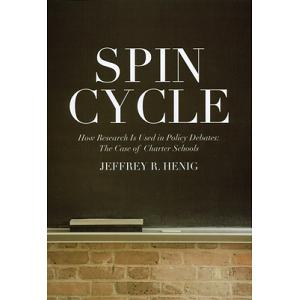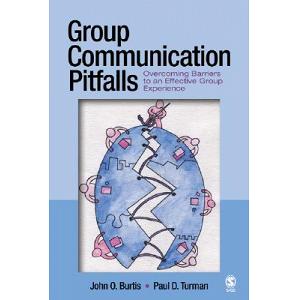Finding Evaluation Evidence for Policy Guidelines and Evaluations
Using Research in Policy Cycle
How does scientific information get to people involved with policymaking?
- Formal education and training
- Scientific journals
- Media
- Legislative aids and other staff
- Lobbyists
- Social action and advocacy groups
- Expert testimony
- Government research
- Many other mechanisms
Experts are regularly asked to lend their expertise, including testifying before legislators and regulatory agencies. In many countries, there are several governmental agencies and departments that prioritize science and research. Yet, we recognize that public policy is not always driven by scientific findings and research. Beyond scientific information, a wide range of influences contribute to the policy process. What is the reason for this? While it's a complicated issue, it largely has to do with three categories of barriers: those related to the research process itself, communication hurdles, and political obstacles.
Lastly, one of the most substantial barriers is political factors. Political factors frequently misrepresent or overlook research findings that conflict with their defined problems or policy objectives. This behavior is not limited to any single ideology or political party; it encompasses a broad spectrum of individuals, including politicians, their staff, lobbyists, advocacy organizations, trade associations, government bureaucrats, and even researchers themselves. At times, the misrepresentation of research results or the intentional data favoritism is a deliberate act. However, many individuals are frequently unaware of their own biases and how these biases influence their search for and use of research and evidence.
Ultimately, the key point is that the policy process, While the policy process is rational in some respects, it is also influenced by a multitude of factors, with scientific information being just one among many. All policy is influenced by values, encompassing those related to political ideology, ethics, moral reasoning, and cultural norms and biases. While we all understand the crucial and undeniable impact of politics and values on the policymaking process, thorough research and analysis are essential at every stage of the policymaking process. The objective should be to develop evidence-based policy whenever feasible, as this approach is crucial for maintaining the core pillars of the public sector strong. It is essential for a government to support rather than hinder the economy, to utilize public resources efficiently, and to create and implement effective policies and programs. Additionally, it plays a critical role in addressing and reducing societal inequalities and inequities. Let me clarify that being objective— which is why we rely on reliable data and evidence— is not the same as being neutral. The generation and application of objective data and research evidence in the policy process can certainly guide conclusions and recommendations at every stage, including problem definition, agenda setting, policy formulation, decision-making, evaluations, and more. The aim is to utilize research to maintain objectivity regarding problems, their causes, and potential policy solutions. However, this does not imply that the data cannot also inform opinions and recommendations.
Systematic Literature Reviews
As policymakers, it is crucial to assess the effectiveness of different policies and to comprehend why some policies succeed while others do not achieve their intended goals. Systematic literature reviews (SLRs) are an essential resource for comprehending the current landscape of evaluation research, supporting evidence-based decision-making, and enhancing scientific knowledge in public policy. Thus, it is crucial for policy professionals to develop the skills necessary to search for, identify, and summarize SLRs effectively.
A Systematic Literature Review (SLR) is is a complete and comprehensive review of the existing research evidence on a particular topic, typically requiring a more structured and rigorous methodology than other types of literature reviews, such as scoping or argumentative reviews. SLRs characteristically frame the research discoveries within evaluations of the study designs' validity. Thus, SLRs are crucial for collecting and evaluating evidence in a reliable and unbiased manner.
Figure 1 illustrates the typical stages involved in performing a systematic literature review.
- Intervention and Settings
- Peer-Reviewed vs. Grey Literature
- Language
- Study Designs
Researchers generally use a variety of strategies to locate potential studies and then apply the criteria to the studies they have identified. Furthermore, they develop and implement a coding form to review the intervention studies. Sample details that can be recorded for studies include:- Dates
- Setting
- Population(s) under study
- Statistical analysis approach
- Dates
- Setting
- Population(s) under study
- Statistical analysis approach
The significance of evaluating systematic literature reviews, in the policymaking process, it is crucial to identify and analyze high-quality evaluation studies of policies and programs to gain insights into what the overall body of evaluation research indicates about a particular policy strategy. "Systematic Literature Reviews (SLRs) can be valuable in answering questions about the efficacy of an intervention or the effects of exposure to a specific program or initiative." When presented in policy briefs, Systematic Literature Reviews (SLRs) offer essential information to policymakers, decision-makers, and other stakeholders who often lack the time or resources to thoroughly review and evaluate the evidence pertaining to a specific concern or policy issue. Moreover, program evaluation findings contribute to every stage of the policymaking cycle.
Finding systematic literature reviews, identifying systematic literature reviews doesn’t need to be an overwhelming task.
Google Scholar “systematic literature review” “early childhood education”
Google Scholar “systematic literature review” “early childhood education policy”
Finding Policy Resources for Issues You Care About
- Whole Child Policy Policy Toolkit
- OECD: Organisation for Economic Cooperation and Development Social Policies and Data
- Housing Policy Toolkit
- UNICEF Social Policy Resources
- Policy Link Resource
Public Policy Evaluation: A Real Story in Detroit, Michigan, United States










No comments:
Post a Comment